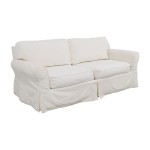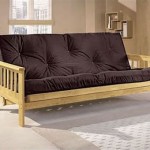The Ubiquitous Feline: Understanding the Cat Lying on Sofa Phenomenon
The image of a cat lying on a sofa is a common and often comforting one. It represents relaxation, domesticity, and the unique bond between humans and felines. However, this seemingly simple act is underpinned by a complex interplay of instinct, comfort seeking behavior, and environmental factors. This article explores the various reasons why cats are so often found lounging on sofas, delving into the evolutionary basis of these behaviors, the specific features of sofas that make them attractive to cats, and the potential implications for the cat's health and well-being.
Understanding the motivations behind a cat's choice to occupy a sofa allows for a greater appreciation of their needs and preferences. This understanding can contribute to creating a more enriching and comfortable environment for the feline companion. Furthermore, recognizing potential problem behaviors associated with sofa lounging can facilitate proactive interventions to improve the cat's overall quality of life.
The Sofa as a Prime Real Estate: Comfort and Security
One of the primary reasons cats gravitate towards sofas is the comfort they provide. Sofas, often upholstered with soft fabrics and padded cushioning, offer a significantly more comfortable surface than the floor. A cat's anatomy, particularly their bone structure and musculature, is optimized for flexibility and agility, but not necessarily for prolonged periods of lying on hard surfaces. The cushioning of a sofa provides support and reduces pressure points, allowing the cat to relax more fully.
Beyond pure comfort, sofas also offer a sense of security. Their elevated position provides a vantage point from which the cat can observe its surroundings. This is a crucial aspect of feline behavior, as cats are both predators and prey. The ability to survey the environment from a safe and comfortable location allows the cat to monitor potential threats and opportunities without being easily detected. The height advantage provides a sense of control and reduces the risk of being surprised by other animals or humans.
The texture and material of the sofa also play a role in its appeal. Many cats are drawn to soft, plush fabrics that mimic the feel of their mother's fur or the warmth of a fellow feline. Some cats may also engage in kneading behavior on sofa cushions, which is a remnant of kittenhood when they would knead their mother's abdomen to stimulate milk flow. This behavior is believed to be associated with comfort and relaxation.
Furthermore, sofas often retain the scent of their human occupants. This scent provides a sense of familiarity and security for the cat. Cats have a highly developed sense of smell, and they use scent to mark their territory and identify members of their social group. By lying on the sofa, the cat is effectively imbuing its scent onto a shared space, reinforcing its connection to its human family and establishing its presence within the household.
Thermoregulation and Sunlight: Seeking Optimal Conditions
Temperature regulation is a critical aspect of feline physiology, and cats are adept at seeking out environments that help them maintain a comfortable body temperature. Sofas, particularly those positioned near windows, offer opportunities for sunbathing. Cats are drawn to sunlight for its warmth, which helps to raise their body temperature and conserve energy. This is particularly important during colder months when the ambient temperature is lower.
Sunbathing also plays a role in vitamin D synthesis. When sunlight interacts with the cat's skin, it triggers the production of vitamin D, which is essential for calcium absorption and bone health. While commercial cat foods are typically supplemented with vitamin D, exposure to sunlight can provide an additional source of this important nutrient.
In addition to sunlight, sofas can also provide insulation from drafts and cold floors. The cushioning and fabric of the sofa help to trap heat and create a microclimate that is warmer than the surrounding environment. This is particularly beneficial for older cats or those with thin fur who are more susceptible to cold temperatures.
Conversely, during warmer months, sofas can offer a respite from overheating. Some sofa fabrics are cooler to the touch than other surfaces, providing a comfortable place for the cat to rest and regulate its body temperature. The shade provided by the sofa can also help to protect the cat from direct sunlight and prevent overheating.
Behavioral and Environmental Influences: Territory and Stress
A cat's propensity to lie on the sofa can also be influenced by its behavioral characteristics and the overall environment of the home. Cats are territorial animals, and they often establish preferred resting spots within their domain. The sofa, being a prominent piece of furniture in the living space, is often considered a prime piece of real estate and a strategic location for monitoring the environment.
In multi-cat households, competition for resources and territory can influence which cat occupies the sofa. A dominant cat may claim the sofa as its own, while subordinate cats may be hesitant to approach it. This can lead to stress and anxiety for the subordinate cats, as they are denied access to a comfortable and secure resting place. Providing multiple comfortable resting spots throughout the home can help to reduce competition and promote a more harmonious environment.
Stress and anxiety can also contribute to a cat's tendency to lie on the sofa. In stressful environments, cats may seek out familiar and comfortable locations as a means of coping. The sofa, with its comforting textures and familiar scents, can provide a sense of security and reduce anxiety. Identifying and addressing the underlying causes of stress is crucial for improving the cat's overall well-being.
Changes in the household environment, such as the introduction of a new pet or a change in routine, can also trigger increased sofa lounging. Cats are creatures of habit, and they are sensitive to changes in their environment. By reverting to a familiar behavior, such as lying on the sofa, the cat may be attempting to re-establish a sense of normalcy and control in a disrupted environment.
In some cases, excessive sofa lounging can be a sign of an underlying medical condition. Cats that are experiencing pain or discomfort may seek out soft surfaces to alleviate pressure and reduce pain. If a cat suddenly starts spending significantly more time on the sofa, it is important to consult with a veterinarian to rule out any underlying medical issues.
Furthermore, a cat's age and physical condition can influence its sofa habits. Older cats, particularly those with arthritis or other mobility issues, may find it more difficult to jump onto and off of the sofa. Providing ramps or steps can help to make the sofa more accessible and reduce the risk of injury. Similarly, overweight cats may struggle to reach the sofa, and addressing their weight through diet and exercise can improve their mobility and overall well-being.
The presence of scratching posts and other enrichment items can also play a role in a cat's sofa lounging behavior. If a cat does not have adequate opportunities to engage in natural behaviors, such as scratching and climbing, it may be more likely to target the sofa. Providing scratching posts in various locations throughout the home can help to redirect scratching behavior away from the furniture. Similarly, providing climbing structures and interactive toys can help to stimulate the cat's mind and body and reduce boredom, which can contribute to excessive sofa lounging.
Ultimately, understanding the various factors that contribute to a cat's sofa lounging behavior is essential for providing a comfortable and enriching environment. By considering the cat's physical needs, behavioral characteristics, and the overall environment of the home, it is possible to create a space where the cat feels safe, secure, and content. This understanding can lead to a stronger bond between humans and felines and improve the overall quality of life for both.

Close Up Of Ginger Cat Sleeping On Sofa Against Wall At Home Superstock

Funny Fat Cat With His Paw Up Lying On The Sofa Remote Control From Tv Stock Photo Adobe

Cute Cat Lying On A Sofa In Living Room Closeup Colourbox

How To Stop A Cat From Scratching Furniture Diamond Pet Foods

Adorable Cat Lying On Sofa At Home Premium Photo

Cute Cat Lying On Couch At Home Free Stock Photo

6 Amazing Diy Cat Couch Plans You Can Create At Home Catster

Cute Cat Lying On A Sofa In Living Room Closeup Colourbox

Orange And White Cats Lying On Sofa Free Stock Photo

Lilac Shaded Silver Tiffanie Cat On Sofa Art Prints Posters Puzzles From Universal Images Group








